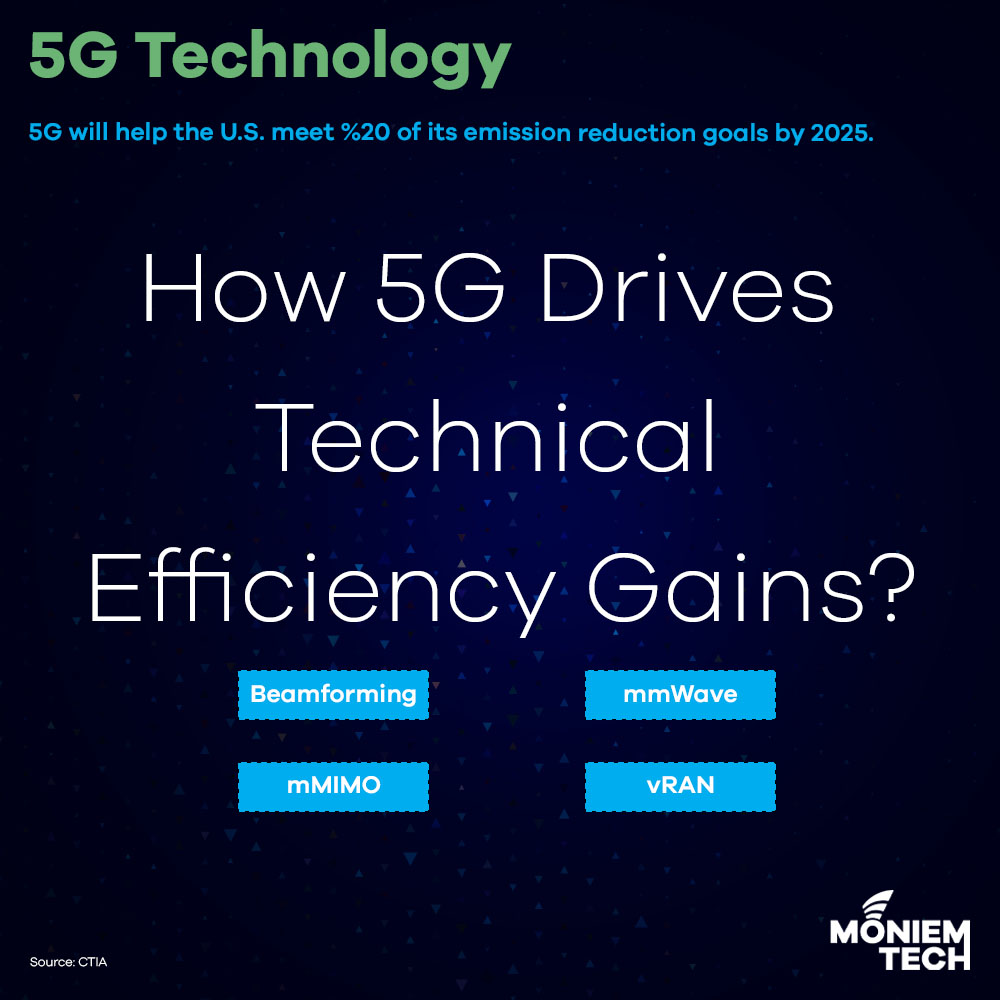5G builds upon existing network infrastructure to handle the increased demand for data in an interconnected society. It is transforming industries and is changing the way businesses and consumers use mobile technologies, providing substantial processing and efficiency benefits that previous generations of mobile technology did not.
5G can deliver up to 100 times higher bandwidth, compared to a 4G network.
5G Main Enabler Technologies
5G can reduce carbon emissions through more efficient use of energy per bit of data transmitted with the help of four main technologies as below

- Beamforming
- It allows antennas to focus the wireless signal to where the devices are located, reducing energy spent on broadcasting a signal in locations where no devices are currently in use.
- Massive Multiple-Input, Multiple-Output (mMIMO)
- It reliably increases the quality, throughput, and capacity of the radio link to use the same amount of energy to transmit more data.
- Millimeter Wave Spectrum (mmWave)
- It helps increase the amount of data that can be transmitted within a given signal, decreasing energy consumed per bit of data transmitted.
- Virtualized Radio Access Networks (vRAN)
- will dynamically program and centralize computing resources such as operating and cooling servers, allowing greater economies of scale and reducing per-bit energy use.
